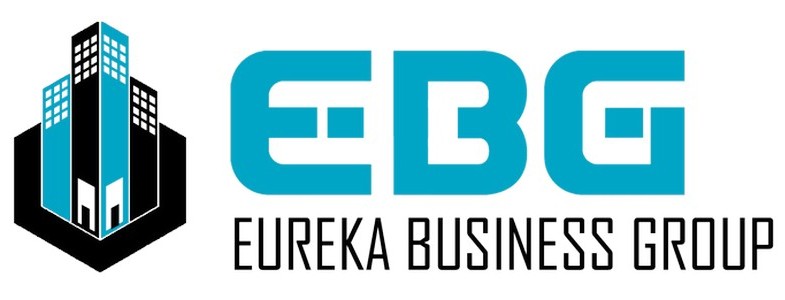- Home
- Industrial
- Industrial Investors Resources
- How to Prepare for Your First Industrial Flex Acquisition!
How to Prepare for Your First Industrial Flex Acquisition!
The industrial real estate sector has long been a cornerstone for investors looking to diversify their portfolios and achieve stable returns. Among industrial property types, industrial flex space has emerged as one of the most flexible, appealing options. Flex spaces, as their name suggests, allow for flexibility in design and use, providing a blend of office and warehouse or light industrial areas within a single building. For first-time buyers, acquiring an industrial flex property can seem challenging, but with strategic planning, you can successfully navigate the process and position yourself for success.
Here’s a comprehensive guide to help you prepare for your first industrial flex acquisition.
1. Understand the Market Dynamics
The first step to any real estate acquisition is understanding the market dynamics. The industrial sector has grown tremendously over the past few years, driven by factors such as the rise of e-commerce, increased demand for distribution centers, and supply chain shifts. These trends influence flex spaces, which are often used as last-mile logistics hubs, service centers, or even showrooms.
Conduct a thorough market analysis to understand:
- Current Demand: High demand for flex space indicates a vibrant market, which can mean strong tenant interest.
- Supply and Vacancy Rates: Low vacancy rates often signal a healthy market, though high competition may drive prices up.
- Future Trends: Monitor e-commerce growth, local business expansions, and economic factors that could impact the demand for flex space.
This analysis will guide you in selecting the right property and identifying growth areas within the flex space sector.
2. Define Your Investment Goals
Defining your investment goals will shape every subsequent decision. Are you looking for a property with high tenant turnover for short-term gains or stable, long-term leases for steady cash flow? Here are some typical goals to consider:
- Cash Flow: Flex spaces can generate steady cash flow from long-term leases.
- Appreciation: Many investors seek properties in areas projected for growth, hoping for property value appreciation.
- Value-Add Opportunities: Some properties offer potential for upgrades that can boost rental income or increase the property’s market value.
Deciding on a primary goal will help you remain focused and avoid overextending financially.
3. Conduct Due Diligence on the Property
Due diligence is essential in any property acquisition but especially critical for industrial properties, which often have unique requirements. When evaluating a flex property, consider:
- Property Condition: Evaluate the building’s structure, roof, HVAC system, and electrical capacities. Older properties may require costly upgrades, which you’ll want to factor into your budget.
- Zoning and Permits: Confirm that the property’s zoning aligns with its intended use. Flex spaces may need specific permits or zoning compliance, especially if your intended tenant operates in a regulated industry.
- Environmental Assessments: Industrial properties may have a history of hazardous materials or waste handling. Conduct environmental assessments (such as Phase I or Phase II Environmental Site Assessments) to ensure the property is clear of contamination issues that could pose financial and legal risks.
- Parking and Access: Industrial tenants often need ample parking, loading docks, and easy road access. Ensure the property has adequate facilities for the types of businesses that may occupy the space.
4. Secure Financing
Financing is a crucial step in any commercial real estate acquisition. Lenders view industrial properties as relatively stable investments, but as a first-time buyer, you’ll need to present a strong financial profile and demonstrate your understanding of the asset class. Common financing options include:
- Traditional Loans: Banks or credit unions may offer commercial real estate loans, often requiring a down payment of 20-30% of the property’s value.
- SBA Loans: If you plan to operate your own business out of the flex space, you might qualify for an SBA loan with lower down payments and favorable terms.
- Private Equity: For those who cannot secure traditional financing or need a faster process, private equity investors might be a viable alternative.
- Debt Service Coverage Ratio (DSCR): Your lender will assess the property’s DSCR to evaluate your ability to repay the loan. Aim for a DSCR above 1.25 to improve your chances of securing financing.
Be prepared to cover additional expenses, including loan origination fees, appraisal fees, and closing costs.
5. Evaluate Potential Tenants and Lease Agreements
One of the unique aspects of flex space is its appeal to a wide range of tenants. Knowing who your target tenants are and understanding their leasing needs will help you establish a profitable investment. Consider the following:
- Tenant Mix: Industrial flex properties can attract a range of tenants, from small businesses to logistics companies. Diversifying your tenant mix can stabilize your income stream.
- Lease Terms: Flex spaces typically feature long-term leases, often five to ten years. Focus on tenants who are willing to commit to longer leases, as these agreements contribute to a predictable cash flow.
- Tenant Improvements (TI): Some tenants may request specific improvements to the space. Evaluate the cost of tenant improvements in advance, as some may add value to the property, while others might not be necessary in the long term.
6. Plan for Property Management
Flex spaces require efficient property management, as they often cater to diverse tenants with varying requirements. You may want to consider:
- In-House Management vs. Third-Party Management: While managing the property yourself can save money, third-party management can offer expertise, particularly if you’re unfamiliar with industrial properties.
- Maintenance and Repairs: Flex spaces often have both office and warehouse areas, requiring separate maintenance plans. Establish a budget and routine for property maintenance to avoid sudden, costly repairs.
- Tenant Relations: Good tenant relations are essential for retaining quality tenants. Address their needs promptly, keep communication lines open, and prioritize issues that impact their business operations.
7. Understand Tax Implications
Owning industrial real estate offers tax benefits, including deductions for mortgage interest, depreciation, and expenses like repairs and maintenance. Consult a tax professional who specializes in commercial real estate to maximize these benefits. They can help you understand the specific deductions available for flex space properties and guide you in setting up tax-efficient structures like LLCs or REITs (if applicable).
8. Develop an Exit Strategy
Before acquiring any real estate, it’s wise to have an exit strategy. Common exit strategies for industrial flex properties include:
- Hold and Lease: Holding the property and leasing it to quality tenants can provide long-term passive income.
- Refinance: After increasing the property’s value through tenant improvements or higher occupancy, you may refinance to pull out equity for other investments.
- Sell: You may sell the property if market conditions are favorable, aiming to profit from property appreciation.
Your exit strategy will depend on your investment goals and market conditions, so reassess periodically.
Final Thoughts
Acquiring an industrial flex property can be a rewarding investment if approached with careful planning and a clear strategy. With a versatile appeal to a range of tenants, industrial flex spaces can yield a steady cash flow and potential appreciation. From analyzing the market and conducting due diligence to securing financing and managing the property, each step is an opportunity to ensure your investment is positioned for success.
By following these steps, you’ll be well-prepared to navigate the challenges of your first industrial flex acquisition and make informed decisions that align with your long-term goals. With the right approach, this investment can pave the way for a diversified and profitable real estate portfolio.



